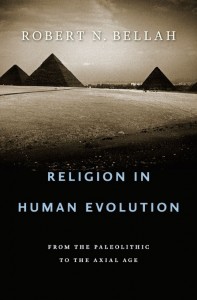 In How to Believe, a blog on “great works of religion and philosophy” hosted by The Guardian, Andrew Brown has been writing about Robert Bellah’s Religion in Human Evolution. From the inaugural post:
In How to Believe, a blog on “great works of religion and philosophy” hosted by The Guardian, Andrew Brown has been writing about Robert Bellah’s Religion in Human Evolution. From the inaugural post:
Bellah offers a perspective on the various phenomena we call religion that unites history (in so far as we have it) with psychology and sociology. Any overarching theory must be this ambitious, because religion is complicated. It is something that people do to themselves, and to their societies, and at the same time something that whole societies do to themselves, to each other and to their constituent individuals. It has – sometimes – theoretical aspects. It has ritual aspects too. Even within Christianity, which is what most of us in the west know best, there are elements of dance, of play, of the exercise of power, of logic, poetry and morality; there are hermits and popes, inquisitors and housewives: all of these can be found without even mentioning myths.
Such an enormous diversity of roles is, of course, dependent on a diverse and complex society. You don’t find popes, priests or inquisitors among the Bushmen, nor anywhere in prehistory. If we’re looking for something common to all expressions of religion, it will not be sufficient to describe any single one. So Bellah starts with the common experience of everyday life – an endless round of purpose-driven problem-solving in which our wants can never be completely satisfied. The first, and almost the most important, point he makes is that everyday life is quite literally intolerable if there is nothing else and no other way to live.
Brown has published eight posts in his series on the book:
- Part 1: “The co-evolution of gods and humanity“
- Part 2: “Faith, language, music and play“
- Part 3: “The primacy of ritual over language“
- Part 4: “The role of worship“
- Part 5: “Group cohesion and identity“
- Part 6: “Justice and the afterlife“
- Part 7: “Moses and monotheism“
- Part 8: “The invention of reason“
For more on Religion in Human Evolution, check out The Immanent Frame’s discussion series.












